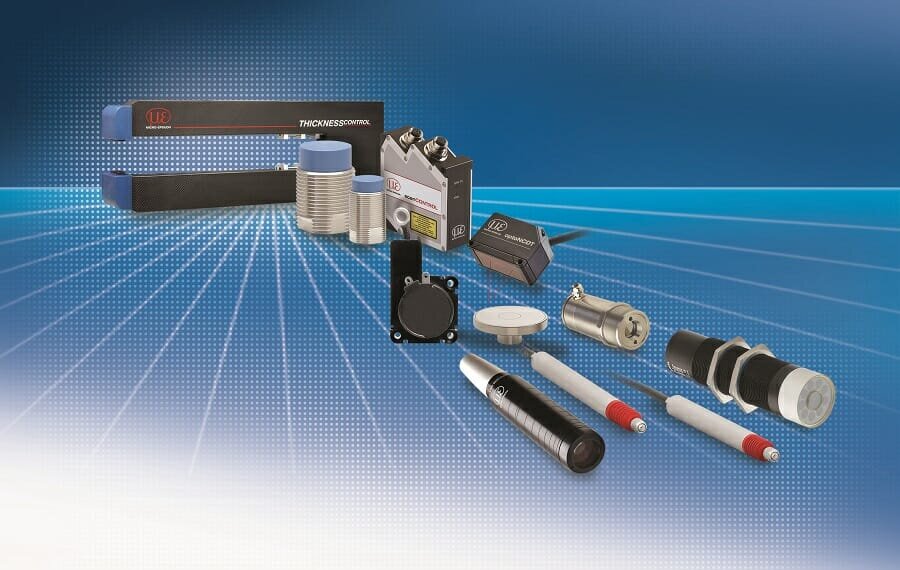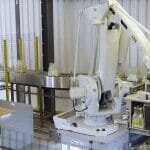Why do sensor suppliers ask detailed questions when it comes to solving a measurement task? With different measurement technologies and thousands of sensor variants to choose from, the answers to these questions help suppliers decide which sensor is best for the application, says Glenn Wedgbrow, Business Development Manager at Micro-Epsilon UK.
When it comes to solving a measurement task, sensor suppliers will often need to ask detailed questions about the application. Whether you need to measure distance, deflection, position, gaps, edges, temperature, surface profile or colour, there will be different measurement technologies and thousands of different sensor variants available to choose from. By asking detailed questions about the measurement task, a supplier can use these answers to work out which technology and sensor are most appropriate for your application.
Here are the top 10 questions you should consider when enquiring about a sensor to solve your measurement task. At Micro-Epsilon, we always ask customers these questions because we want them to receive the right solution from us. Perhaps you should check whether your suppliers are doing the same?
1. What are you trying to measure? Can you describe the application? Do you have a drawing?
When you call a supplier, it can often be difficult to imagine exactly what you want to do, especially over the phone. Pictures, drawings and photos can help the supplier to understand the requirement you have.
2. Why is it important to make this measurement? What is the benefit in acquiring the measurement?
Understanding the need of the measurement is crucial. It could be that the supplier ends up recommending a sensor or system over and above what you first imagined. However, if the implementation of a solution leads to your company saving thousands of pounds or tens of thousands of pounds per year, then surely it would still be worth considering?
3. What are the technical requirements? How far can the target move, how fast does it travel and what tolerance needs to be achieved?
As a supplier, our sensors measure displacement – changes in position, thickness, etc. We also measure temperature and detect/monitor colour. Understanding the boundaries of the measurement helps to identify the possible sensor technologies. Tolerances are probably the most important information you can provide to the supplier, as these ultimately define the real accuracy required in the application.
4. What is the target material and its surface condition?
If a supplier knows they are measuring against metals, plastic, glass, rubber or other materials, this will again help define which sensor technologies could be used. You should also know if the surface appearance changes in terms of its colour, shine, and temperature during the measurement task. Is it rough, smooth or varied, as this will also have an effect on measurement performance.
5. What is the shape, size and movement of the target?
This question is all about the physical aspects of the target. By understanding the geometry, a supplier can establish if the target is large enough for a specific sensor to be used, or if a small sensor spot size is required.
6. How much space is available to mount a sensor? What are the restrictions above, below and around the target?
This can often be overlooked, but if you are trying to fit a sensor into a small space (perhaps it is a retrofit or an upgrade) knowing how much room is available can often influence the type of sensor that can be used. Sometimes it might be possible to move the sensor further away from the target than at first thought and look through apertures or windows.
7. What is the ambient environment for the sensor and target? These can often be different.
By answering the above question, the supplier should now start to have a better idea of which sensor technology can be used, however, there still may be more than one option to consider. Make sure you think about the location of both the sensor head and (if applicable) the controller. Key factors here will be ambient temperature, cleanliness of the environment (e.g. dust, steam or oil), pressure or vacuum, as these can affect measurement performance and sensor accuracy.
8. What quantity is required? Is it a single measurement, multiple measurements on a single target required for multiple machines or a combination of all?
Left unanswered, this question could have serious implications on the success of the project. Having just one sensor to measure is easy to integrate. However, if you are measuring multiple positions at the same time then synchronisation and connectivity of the sensor(s) are important factors to consider. What output signal you need is also important (e.g. analogue, digital, fieldbus).
9. Have you defined a budget for solving the measurement task?
The answer to question 2 can help define a budget. However, if the required solution calls for more money than you thought, how can it still be justified? An incorrectly specified sensor chosen to meet a budget may just be money wasted if it doesn’t measure as required. Before setting a budget, it can be beneficial to talk to the sensor supplier in order to help determine what a realistic budget should be. As a supplier, we will always aim to work to your budget, but if that results in a compromised sensor selection, we have to ask is that the best decision for your company over the long term?
10. When do you need a working solution by?
Most catalogue sensors are available from stock, but we also have the ability to customise parts of the sensor specification, for example, providing you with a non-standard measurement range, target specific calibrations, or different cable lengths. We can even create a bespoke sensor for OEM requirements. However, these can take time and so it is best to talk to the supplier in plenty of time to help enable the right solution is chosen, rather than one which ‘fits’ into a shorter timescale.
For more information, please call the Micro-Epsilon sales department on +44 (0)151 355 6070 or email [email protected]





